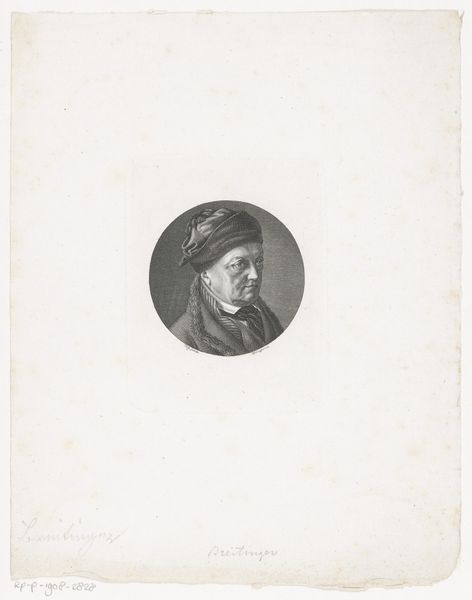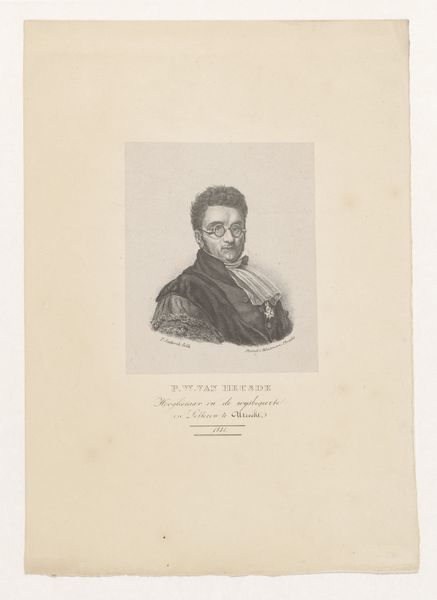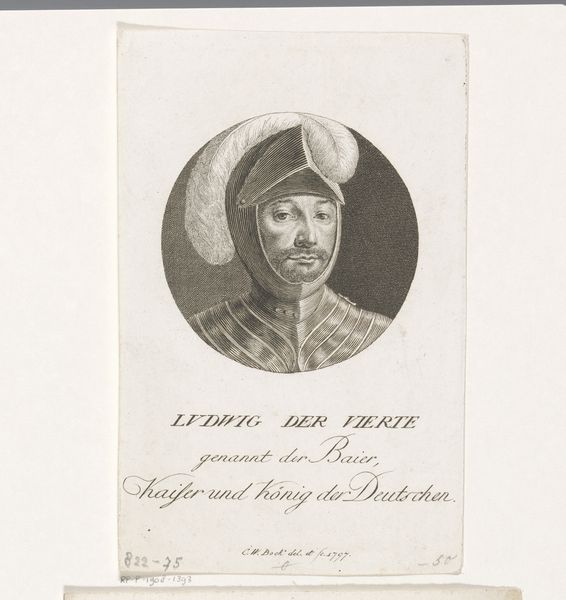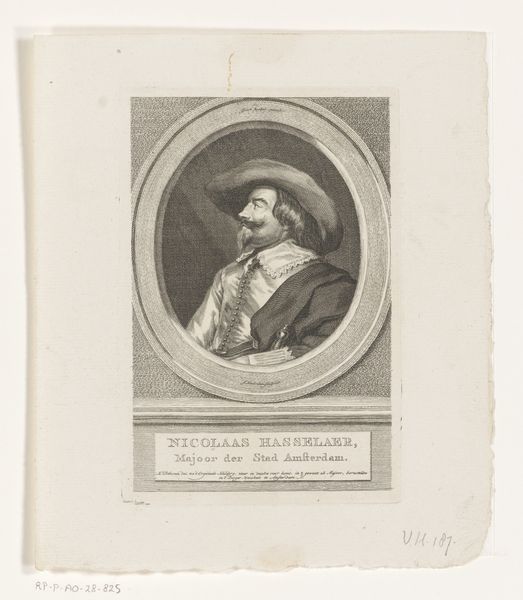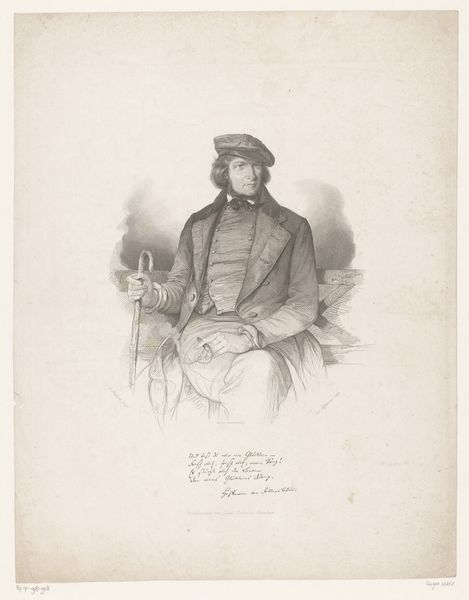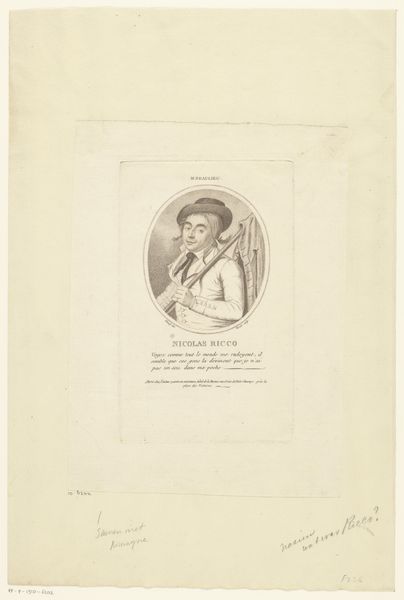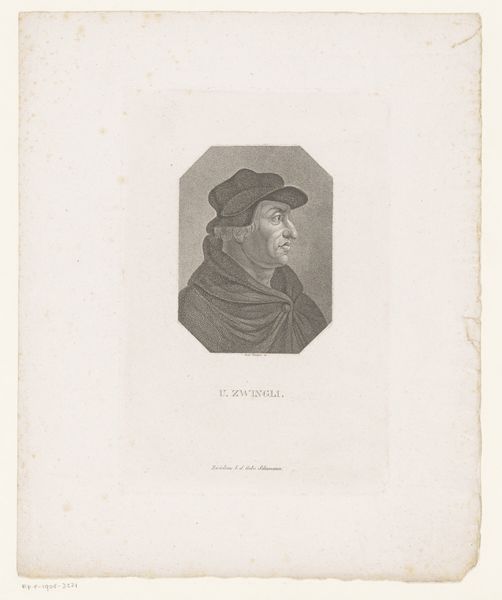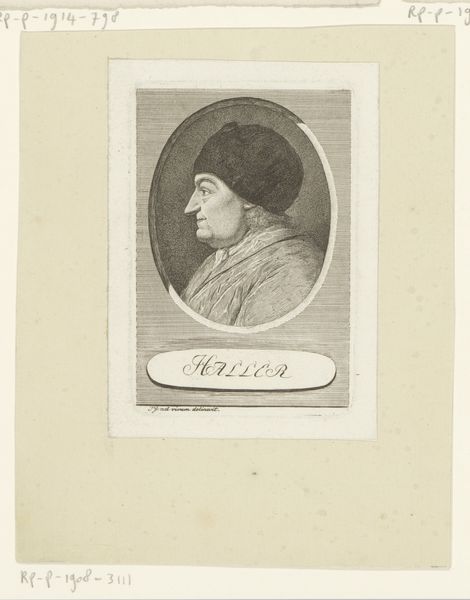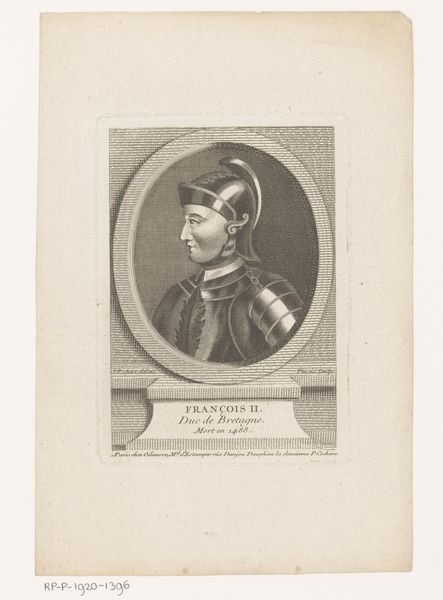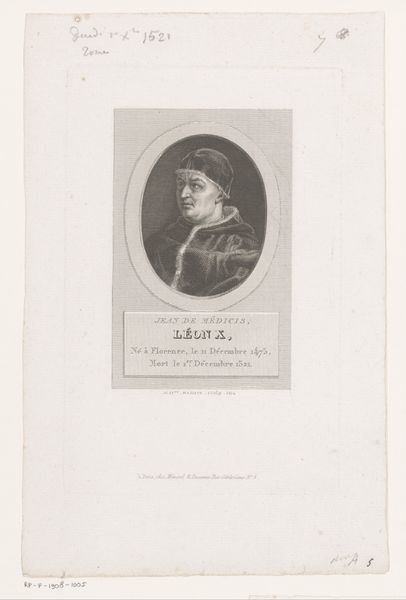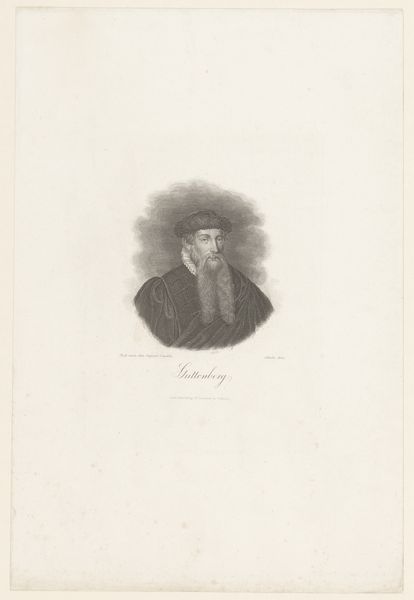
print, engraving
#
portrait
# print
#
romanticism
#
history-painting
#
academic-art
#
engraving
Dimensions: height 176 mm, width 128 mm
Copyright: Rijks Museum: Open Domain
Curator: This is Christian Schule's 1816 engraving, "Graf von Neyperg." What's your immediate impression? Editor: The striking contrast of the stark, oval portrait against the paper’s aged texture is initially arresting. But his eye patch lends an immediate aura of mystery and martial intensity. What stands out to you from a formal perspective? Curator: It's all about the sharp lines and delicate stippling technique Schule employs. Look closely, and you see how he creates depth, not with broad strokes, but with meticulous precision, building tone on tone. There’s a remarkable sense of three-dimensionality despite the limitations of the print medium. Editor: True, and one must appreciate that each line, each dot, required significant skill and time. As a print, this was made to be distributed widely. Its material existence speaks to the rise of printed imagery and the democratization of portraiture in the early 19th century. I also appreciate the inscription beneath the image itself, it reads in German “Graf von Neyperg, K. K. Feldmarschallieutenant, Seine Divisions Commandant.” Curator: Indeed, which immediately frames it as a piece about nobility and rank, and helps clarify Neyperg’s role in the historical narratives that romanticism was fascinated with at this moment. Consider the composition – the framing of the face and the intense gaze which reflects perhaps ideas of duty, courage and a specific kind of honor that comes with the militarism in this historic moment. Editor: The engraving also invites us to ponder Neyperg's social position. What would this portrait have signified to its intended audience? And who were they, specifically? Was it primarily other members of the military, aristocrats who had enough purchasing power or some other specific demographic? It's a material object with the potential to open discussions of history and the commodification of power and status. Curator: Absolutely, and Schule brilliantly uses the language of academic art to subtly communicate these ideologies about Neyperg himself, class and nationalism in his historical moment. The composition directs the eye so precisely – every element has been clearly thought through. Editor: And thinking through the act of its creation, from the initial drawing to the final print—there’s a remarkable story embedded in those layered processes, the decisions, even the waste generated to come to the finished project that offers a fuller, much richer account of early 19th-century cultural landscape and artistic labor practices. Curator: Ultimately, Schule's "Graf von Neyperg" presents a compelling study in form, representation, and early 19th century societal mores. Editor: And as such, it highlights both the artistry involved in printmaking as well as the broader societal forces which are embedded within this image through material and design.
Comments
No comments
Be the first to comment and join the conversation on the ultimate creative platform.


